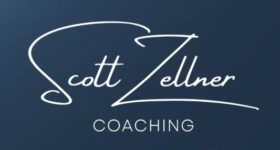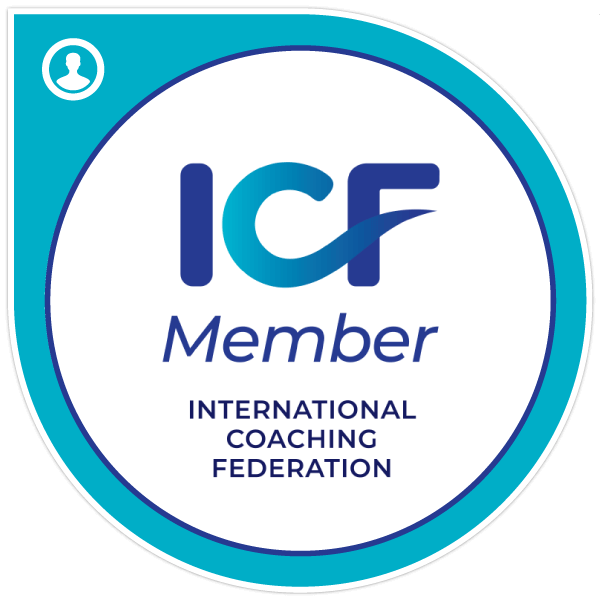In coaching sessions I’m often asked for book recommendations. Ironically I’m not a voracious reader, often quipping “I’ll wait for the movie to come out.” But through the years (decades) I’ve developed a favorites list that essentially makes up “Scott’s Book Club.”
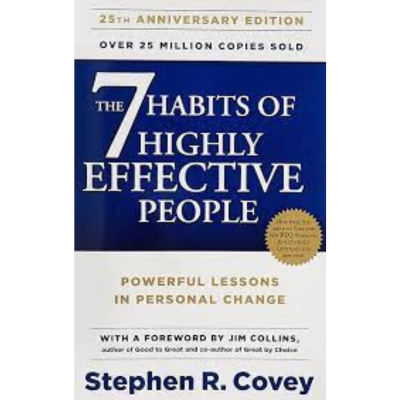
“The 7 Habits of Highly Effective People” by Stephen R. Covey is a timeless classic. First published in 1989 with over 40 million copies sold, many of you have read it. But in my coaching I’ve discovered few actually apply these principles, while the next generation of leaders have only heard of what’s been voted one of the most influential business books.
For those that know me well this will come as no surprise — I am very intentional about Habit 2 “Begin with the end in mind.” I typically start any meeting or project off by asking “What does success look like?” to create alignment and focus on the end goal.
But this habit applies more profoundly to the long term such as your career journey or life’s mission / purpose. Don’t just let your career / life happen, rather architect your future by leading with your values, applying your strengths, unleashing your energy, and following your passions.
I love Covey’s analogy of climbing the ladder of success: “If the ladder is not leaning against the right wall, every step we take just gets us to the wrong place faster.” A mission statement is the key to making sure your ladder is leaning against the right wall.
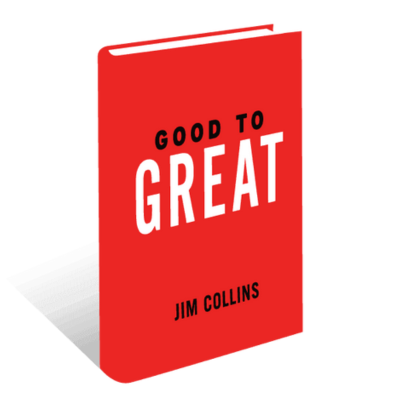
Jim Collins’ Good to Great remains one of the most practical and enduring leadership books I’ve read. Collins studied 1,435 companies and identified just 11 that made the leap from good to great — and sustained it. Based on a five-year research project comparing companies that made the leap to those that did not, Good to Great shows that greatness is not primarily a function of circumstance but largely a matter of conscious choice and discipline. This book discusses concepts like Level 5 Leadership; First Who, Then What (first get the right people on the bus, then figure out where to drive it); the Hedgehog Concept, and the Flywheel.
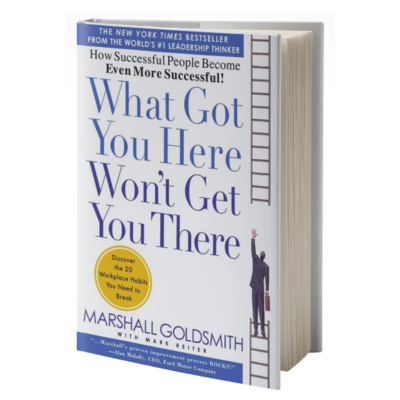
“We spend a lot of time teaching leaders what to do. We don’t spend enough time teaching leaders what to stop. Half the leaders I have met don’t need to learn what to do. They need to learn what to stop.” — Peter Drucker
In “What Got You Here Won’t Get You There” #1 Executive Coach in the World Marshall Goldsmith details 20 habits / behaviors to stop doing. These are based on thousands of 360-degree Assessments he’s conducted for C-suite leaders over his distinguished career.
Fortunately none of us suffer from all 20 bad habits, but if you’re like me 2 or 3 will really resonate. For example, I suffer from Habit 2, Adding Too Much Value. After weeks of perfecting an idea, a team comes into your office to gain your support. You love the idea, but share some ideas to make it “even better.” The 5% of value that I may have added reduces the teams commitment by 50%. Now it’s my idea, not theirs, and the team walks out of my office 50% less energized than when they walked in. Uggh!!!
The good news is that once you recognize the bad habit, the fix is simple. In this example simply share your excitement for the idea, Congratulate the team, and ask how you can help them move forward. Less is more.
And as leaders, once we have the 20 habits in mind, we can help our people recognize their bad habits so they can become more effective as a result.
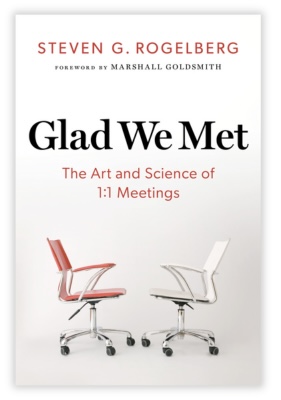
Are Your 1:1’s Effective?
Likely not and for good reason. Turns out only 1 organization in the Fortune 100 provides training on how to run an effective 1:1. As a result the 1:1 typically serves the leader’s needs as opposed to focusing on the direct. As leaders we get evaluated on the success of our teams, so refocusing our 1:1’s on elevating our direct’s performance is the best use of this time.
I attended talks at the World Business & Executive Coaching Summit and found Steven Rogelberg’s talk fascinating. Dr. Rogelberg has spent 25 years researching the science of meetings and is author of “Glad We Met: The Art and Science of 1:1 Meetings.”
Here are some tips based on his research:
1️⃣ Let the Direct Report do well over 50% of the talking. Remember this meeting is for them.
2️⃣ Create a rhythm of either weekly (30 mins) or bi-weekly meetings (60 mins). This cadence helps build Psychological Safety.
3️⃣ Focus on Connection. Don’t turn your 1:1s into a status update.
4️⃣ Have an agenda including both short term (e.g., helping employee address roadblocks, challenges) and long term topics (e.g., career development). Encourage your direct to develop the agenda.
5️⃣ End on a positive note, such as:
“Really appreciate your effort..”
“Excited to work with you on this…”
“You have a great track record of overcoming challenges…”
And if you need to reschedule an upcoming 1:1, try to move it up, not back. This shows that you truly value this time with your direct.
You can learn much more from Dr. Rogelberg at his website https://www.stevenrogelberg.com/ or his book.
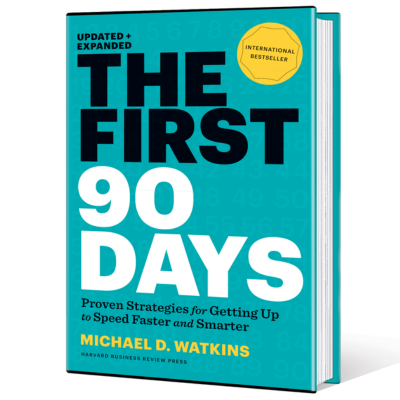
Just been promoted? Started with a new company? Taking on a new role or leading a new team? Then “The First 90 Days” by Michael D. Watkins is a must read.
The book is divided into three sections, each addressing a different aspect of the transition process.
The first section, “Accelerate Your Learning,” focuses on the importance of getting up to speed quickly and effectively. Watkins emphasizes the need to gather information, assess the situation, and build relationships with key stakeholders. He also offers advice on how to prioritize tasks, manage time, and develop a learning plan.
The second section, “Match Strategy to Situation,” explores the various challenges that leaders face when taking on a new role. Watkins identifies four types of situations that leaders can find themselves in: start-ups, turnarounds, realignments, and sustaining success. He explains how each situation requires a different approach and offers guidance on how to match strategy to the specific context.
The final section, “Secure Early Wins,” provides practical advice on how to build momentum and establish credibility in the first few months on the job. Watkins emphasizes the importance of identifying quick wins, building a strong team, and communicating effectively.
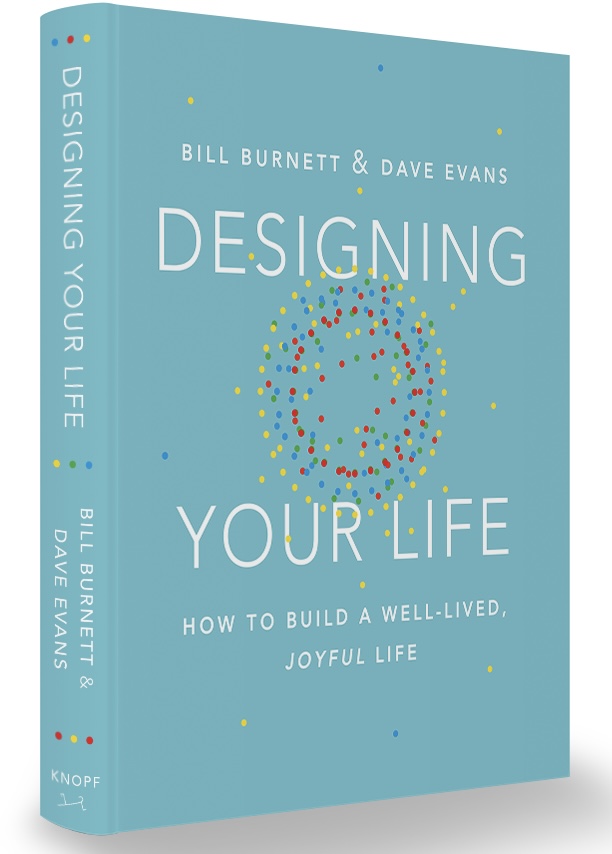
Are you feeling stuck in your career or unsure about your life path? Look no further than “Designing Your Life” by Bill Burnett and Dave Evans. These Stanford Professors and co-Directors of The Life Design Lab show us how to apply design thinking to build a life we can thrive in at any age or stage. Whether trying to decide on your college major, a mid-career change or your encore career, this book is for you.
“Designing Your Life” is chock full of exercises and thought-provoking questions accompanied by a pdf of worksheets to record your thoughts.
One exercise I found incredibly insightful was Odyssey Plans. In this exercise you chart out not one, but three 5 Year Plans. Plan 1 is your current gameplan expanded out 5 years. Plan 2 is what would you do if you couldn’t do Plan 1. Plan 3 is Blue Sky Thinking — what would you do if money or image were not a concern. For me the exercise resulted in a much more exciting 5 Year Plan, bringing some aspects of Plan 2 and 3 into my Plan 1.
The book also contains great content on aligning your life and work, job searches, networking, and how to make good decisions / choices.
“Designing Your Life” offers a fresh perspective on how to approach life’s challenges and make intentional choices that lead to a fulfilling and purpose-driven life.
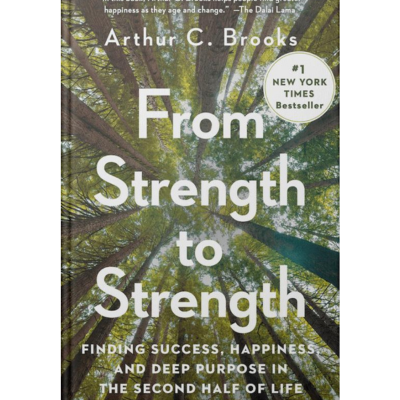
First, the Bad News: Not only is there a noticeable decline as we age in the professional skills that make us successful, but it happens faster than most of us expect. Our 50s for sure, but even our 40s and 30s.
The Good News: There are other skills and qualities that actually improve with age, such as our vocabulary, synthesizing complex ideas, teaching, and hopefully coaching!
The Implication: Those that make the jump from strength to strength thrive. Those that try to hold onto what made them successful in their first half are unhappier. Brooks calls it the “Striver’s Curse.”
So how do you make the jump from Strength to Strength? Brooks lays that out in his 272 page read or 5 hour and 49 minute listen (read by the author). I’ll add Brooks “walks the talk” having taken the leap himself.
And here’s the Great News — in the Second Half there’s no competition for the prizes. We can all succeed and be happier.
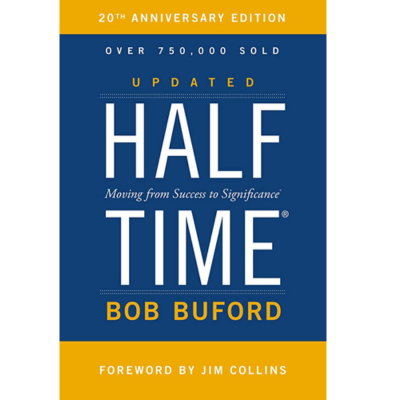
“Halftime” by Bob Buford is a powerful book about finding meaning and purpose in the second half of your life. Buford, a successful entrepreneur, realized in his mid-forties that he had achieved all of his goals in business, but he felt unfulfilled and empty inside. He embarked on a journey of self-discovery and came to the realization that the second half of his life could be even more meaningful than the first.
In Halftime, Buford shares his insights and experiences, as well as those of other successful individuals who have also undergone a similar process. The book is divided into three parts. The first part discusses the need to reassess your life at halftime and the process of transitioning from success to significance. The second part explores the four values that can guide you in your quest for significance: faith, family, friends, and community. The third and final part of the book provides practical guidance on how to turn your vision for the second half of your life into a reality.
Don’t wait until you retire from your corporate role to figure out what you’re going to do with your 2nd half. This book will help you discover your path forward as you transition from career success to significance.
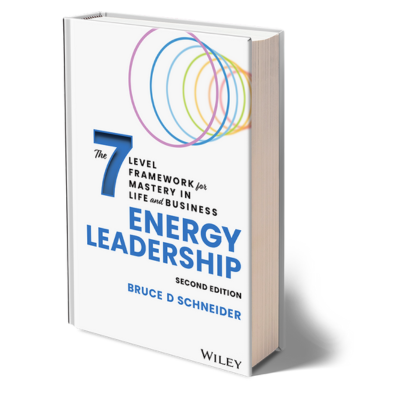
If you’ve taken the Energy Leadership Index (ELI) Assessment, “Energy Leadership” is a must read.
Bruce D. Schneider introduces the seven levels of energy that individuals can operate in, ranging from low-energy, victim mindset to high-energy, inspired leadership. Schneider explains how each level of energy affects decision making, behavior, and communication, and how to identify and shift energy levels to achieve greater success.
The book also presents techniques for shifting energy levels, such as mindfulness, positive visualization, and reframing negative thoughts. Schneider provides practical strategies and tools for leaders to use in their personal and professional lives to improve their energy, and thus improve their performance.
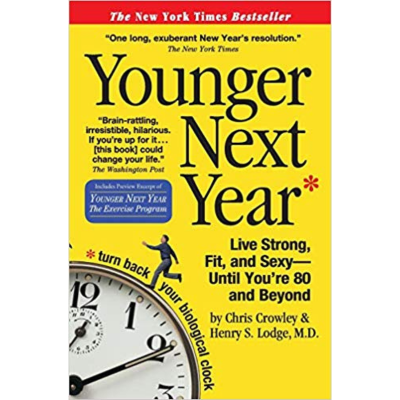
Who doesn’t get excited by this title? But before you click “Buy Now” an important caution. This is a guys book, written by guys for guys. So much so that now there’s an edition for women. Make sure you order the right one.
On the surface the advice in “Younger Next Year” is straightforward — exercising, eating right and investing in relationships is the key to being “younger.” But what’s compelling is the science and delivery behind each point.
I listened to and recommend the Audible version (7 hours and 38 min) which is read by the authors, Dr. Henry S. Lodge who provides the science, and his patient Chris Crowley who put the principles to work and continues to thrive well into his late 80s. The contrasting styles and back and forth keeps you engaged — for example Dr. Harry educates by detailing the body’s chemical reactions from exercising while Chris motivates by offering nutritional advice such as “stop eating crap.”
A couple of takeaways that made a lasting impression on me:
1. Our bodies begin to decay after age 32. In our youth our bodies are in “growth mode” where they continually get stronger regardless of how we treat them. After age 32, the default mode is “decay”. But through consistent exercise we can shift from decay to graceful “aging” by sending our bodies constant signals that we want to grow and nourish.
2. My biggest takeaway was the detrimental impact of a sedentary lifestyle. For most of history we humans have been at the edge of starvation, so we were active hunters. But in today’s world where we sit at our desk all day, our body assumes we are hibernating to conserve energy. Our metabolism slows down and our body shifts into decay. This is why robust physical activity everyday (or at least 6 days/week) is critical. For those that have retired, the authors suggest that working out is our new job.
I can easily see myself revisiting this book every few years for a bit of inspiration.
